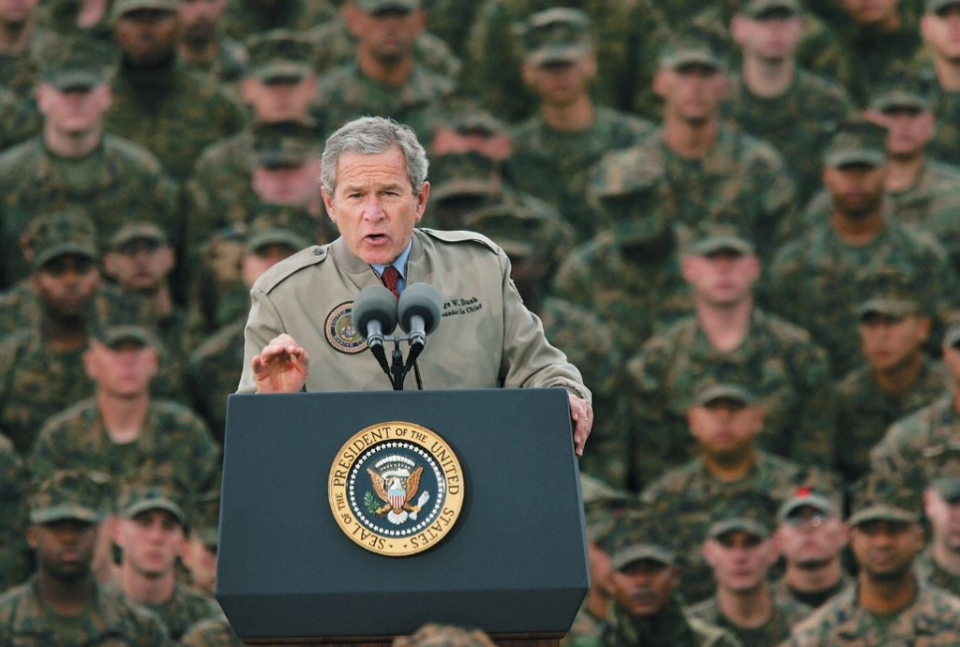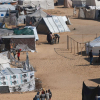
The 2003 American-led invasion of Iraq had dooming consequences for the Middle East and the various ethnic groups in the country. The war saw sectarian violence on a level that has eclipsed examples of sectarianism in the Middle East post redrawing of the borders such as the Lebanon and Syrian Civil War.
Destabilization in the region has brought a brutal domino effect on ethnic minorities in Mesopotamia that have been historically marginalized under the new state of Iraq. This includes Kurds, Yazidis, Armenians, and especially Assyrians. The Assyrians, one of the world’s oldest ethnic groups and a major contributor to the modern human civilization are now in danger of being extinct in their own ancestral homeland, with little focus being given to their ongoing grievances today.
Background
Assyrians have long been marginalized in the Middle East after the fall of their empire in 609 BC. Living under the thumb of various Roman, Persian, Arab, Mongol, and Turkic empires, they were able to preserve their culture and language despite thousands of years of persecution such as the Hamidian Massacres and Seyfo Genocide. After initially being promised a homeland when the Ottoman Empire capitulated, the British government reneged to their promise and incorporated them under the new Kingdom of Iraq.
The Kingdom of Iraq began with a turbulent start that saw a renewed persecution of Assyrians, such as the Simele Massacre. Even after the fall of the monarchy, the persecution didn’t end. Under the rise of the Baathists, Assyrian villages, which are close to many Kurdish villages were targeted by Saddam Hussein’s barbaric genocidal campaign against the Kurds. Despite the endless turmoil in Iraq, Assyrians were able to keep a sizable community in the region, including neighboring Syria. This would drastically change in 2003.
Destabilization of Iraq
When the American-led coalition overthrew Saddam’s Iraq, policymakers clearly didn’t understand the complexity of the region. Coalition Provisional Authority Order 2 dismissed the Iraqi Army, the only force that could’ve stabilized all of Iraq at the time. As the American coalition took control of security of Iraq, they knew little of the language, cultural customs or how to fix the damaged water, electricity, and food crises from the shock and awe bombing campaign.
The new Iraqi government, which largely marginalized Sunnis and became a sectarian government, turned into a perfect breeding ground for militant extremists to conduct terror attacks, something Iraq still suffers from today. Assyrians were indiscriminately targeted by several mass car bombs and even prominent Assyrian priests were brutally executed by al-Qaeda affiliates.
Mass Exodus
From a registered population of 1.2-1.4 million in the 1980s, there are less than 400,000-550,000 Assyrians in Iraq today. Much of the mass exodus has happened due to the destabilization of the country and a lack of proper security against extremist groups. “They simply do not feel safe enough. They cannot sufficiently count on state security or any other force to protect them,” said Philippe Leclerc, UNHCR’s acting representative in Damascus.
Cultural Genocide
Not only has there been a mass exodus and persecution against the Assyrians in the modern period, their cultural heritage has suffered greatly in the region. Many Assyrian churches were destroyed during the rampage. During the height of ISIS’ rampage in the region, many Assyrian historical sites were targeted.
Notable ancient religious sites destroyed include the Monastery of Saint Elijah, St Markourkas Church, Sa’a Qadima Church, Church of Saint Ahudemmeh, Mar Behnam Monastery, and the Assyrian Green Church. Along with religious sites, ancient cities from the Old to Neo Assyrian Periods were also targeted by the terror group.
Much of the ancient city of Nimrud, built in the 13th century BC by Assyrians was sacked by the terror group, including Ashurbanipal II’s palace, which was completely destroyed in the rampage. One of the ancient Assyrian capitals of the Neo period, Dur-Sharrukin, was destroyed. In a finding by the Iraqi government, and local Assyrians, they placed blame on both ISIS and Peshmerga forces who militarized and fortified the ancient city, which allowed much of it to be destroyed in clashes between them. This was later confirmed by satellite imagery.
Arguably the worst destruction by the group was the sacking and destruction of most of the Mosul Museum. Broadcasted in all media, ISIS gloated about the ransacking and desecration of the museum, destroying statues of ancient Assyrian gods and other priceless artifacts. To make matter worse, the Iraqi government has also been largely involved in the cultural genocide and destruction of ancient Assyrian antiquities. In March 2021, private contractors had orders from the provincial government of Nineveh province to tear down pieces of the ancient wall of Nineveh. This came with great condemnation of local Assyrians, conservators and NGOs that Iraq has negated history of Assyria amid rampant corruption in the country.
Current Disputes
Still to this day, Assyrians are suffering from land disputes with some Kurdish tribes, who promised to protect them. One such example includes the aggression over Badarash by local Kurdish tribes. Assyrians have long warned of Barzani’s KRG, which is highly corrupt and have not only sold out Assyrians, but also Yezidis and Kurds themselves.
The region is still very turbulent with no signs of stabilization, especially with a growing food crisis largely due to Russia’s invasion of Ukraine. As the international community has claimed to protect indigenous rights, it must step up to save what’s left of Assyrian people of the Middle East, who are in danger of going extinct in their ancestral homelands.
Source: The geopolitics

















